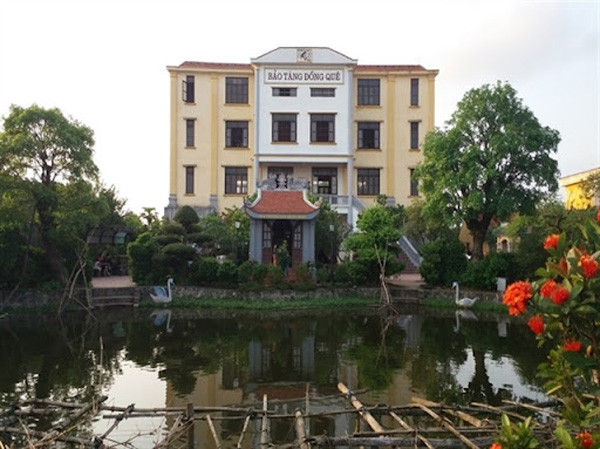
With urbanisation rapidly taking place in every village across Vietnam, a private museum in the northern province of Nam Dinh is trying to preserve the essence of the old lifestyle and rural spirit of the Red River Delta.
The Rural Museum, located in the tranquil village of Binh Di in Giao Thien Commune, Giao Thuy District, is about 110km from Hanoi. It takes tourists on a journey back in time, immersing them in the rural atmosphere, seeing many interesting objects and trying typical dishes of an old village in northern Vietnam.
The first rural museum in the country, which was recognised by Vietnam Records Organisation (VietKings) in 2014, is the brainchild of a retired Major General of the Vietnam People's Army, Hoang Kien, and his wife, Ngo Thi Khieu, a retired teacher. Both of them are natives of Binh Di Village.
Born and raised in the countryside, the couple thoroughly understand the hardship the farmers face and cherish the rustic rural life.
Seeing items that were closely associated with the farmers' life gradually disappearing over time due to urbanisation, they decided to build a museum in which the images and old souls of the Vietnamese countryside could be preserved for future generations.
Khieu, now the director of the Rural Museum, and her family started collecting the items over 20 years ago. The 70-year-old could not remember how many villages she had set foot on to secure nearly 10,000 items for the museum.
Fortunately, the Giao Thuy District authority supported their idea and agreed to lease 6,000sq.m of land to them at a preferential price for 30 years to build the museum.
It was constructed in 2011 and started to welcome its first visitors one year later. It has constantly been supplemented and innovated, from its collection to facilities and services, by Khieu's family members, in addition to the support of local authorities, communities and specialists from Nam Dinh Museum.
The Rural Museum impresses visitors at first sight with its peaceful atmosphere. Like any other old house in the north, it is surrounded by hibiscus hedges and bushes of rare medicinal plants like gardenia or vối (Cleistocalyx Operculatus). It has a large fish pond on its side.
The items are exhibited in two sections – outdoors and indoors. In the first section, visitors could see three models of the old houses in the Red River Delta that belong to three rural classes in the society – the poor, the middle class and the landlord.
Also, in this section, visitors, especially the young ones, could learn and directly try the farmers' work like cultivating, sowing, feeding fish, crabs or frogs, and making wine with manual methods. After that, they could enjoy the delicious dishes cooked by Khieu while watching traditional art performances like chèo (popular opera) or chầu văn singing (folk music combining trance singing with dancing).
"The museum has nearly 3,000sq.m of land to cultivate rice for making wine, grow a variety of vegetables and raise cattle, which will become ingredients for the dishes to serve the visitors," Tran Thi Hue, a museum guide, said.
Inside the main building are four storeys with four different exhibition themes. The first storey displays the battlefield memorabilia of retired Maj Gen Kien and many precious documents associated with the Vietnam People's Army.
On the second floor is for traditional craft tools, living utensils of fishermen, fishermen, salt farmers or craftsmen that are not easy to see these days.
A collection of bronze items are exhibited on the third floor, the highlights of which are nearly 400 hundred copper trays, copper pots, old coins and notes of various values that were circulated during the economic subsidy period. The final floor is a reading space with thousands of books.
The museum vividly enlivens their memories to visitors like Pham Tuan Anh from nearby Giao Tien Commune, who have lived through the old days of the rural area.
"The visit fills me with a nostalgic feeling. I was able to revisit the traditional craft villages of my hometown and see the tools and items that my grandparents and parents used decades ago," he said emotionally.
And to young visitors, the Rural Museum enables them to learn about the difficult life of their predecessors and therefore treasure their present life.
"I have seen many items for the first time, which helps me to understand the hard life of the peasants in the past," said Nguyen Hoang Hai, a student from Thai Binh Province.
To Khieu, her happiness now is that the Rural Museum has become a must-visited tourist attraction in Nam Dinh and has received many donations nationwide.
"The museum has welcomed over 100,000 domestic and international visitors since its opening.
"We will continue to manage the Rural Museum as long as we can. After that, we are considering donating it to the province, hoping to prolong its value," she said.
Source: Vietnam News